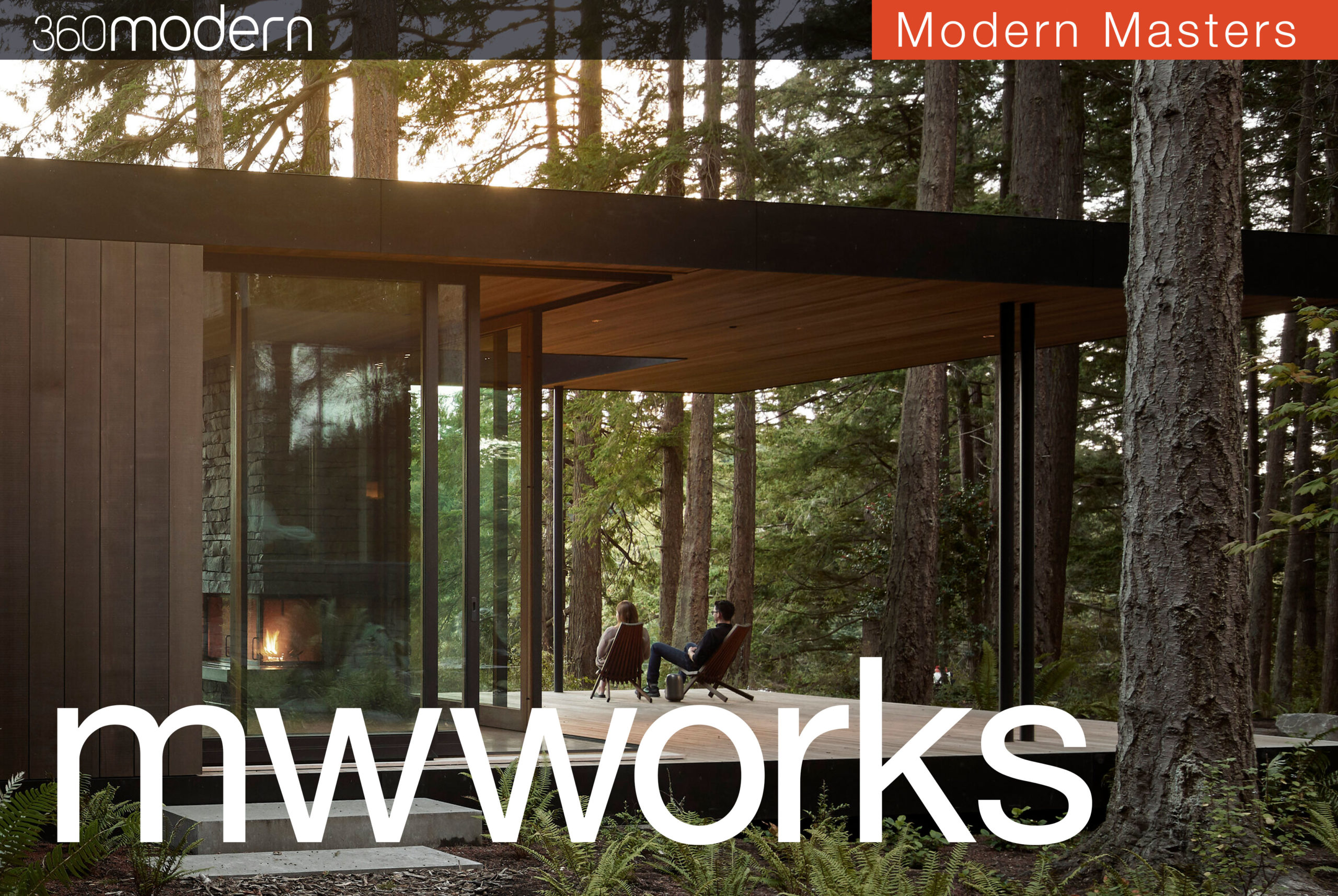The Seattle-based residential architecture firm shows its appreciation for the environment through immersive Northwest Modern design.
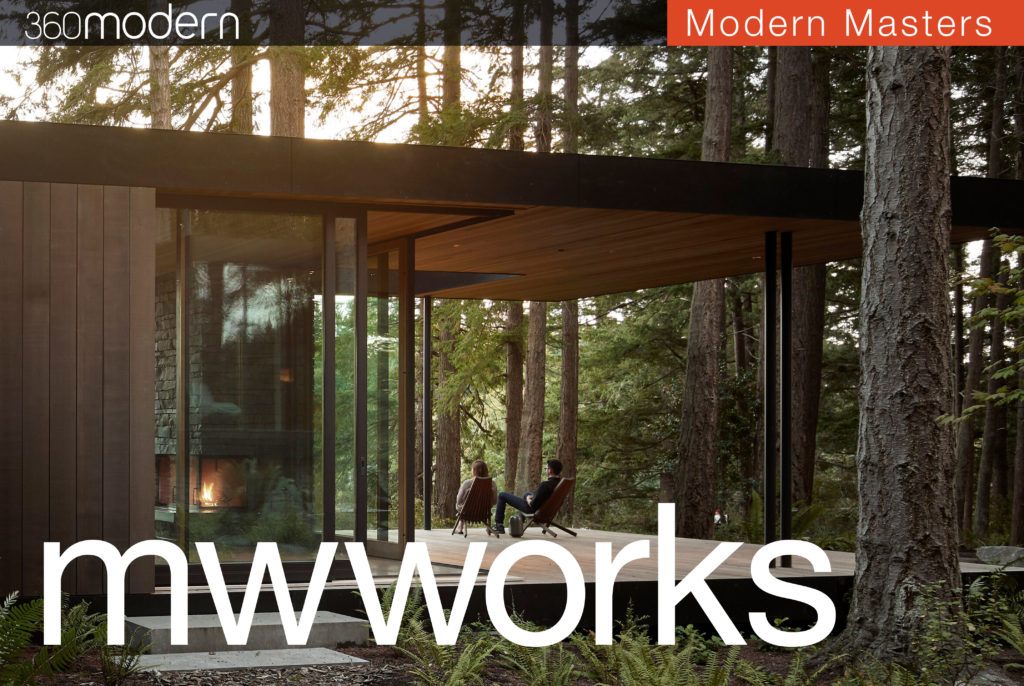
Modern Masters is a recurring 360Modern digital feature, spotlighting the top Modern architects, designers, and builders in the Pacific Northwest and beyond.
From a secluded waterfront retreat on Whidbey Island to a contemporary Seattle dwelling with its own interior courtyard, Seattle-based Modern architecture firm Mwworks brings its clients with nature, no matter where they are. Grounded in simplicity and clean lines, and natural materials, the 13-year-old firm blurs the line between home and landscape with indoor-outdoor spaces, floor-to-ceiling glass windows, and sweeping rooftop decks. Below, we asked the firm’s co-founders Eric Walter and Steve Mongillo about where they fit into the Northwest Modern zeitgeist, their most significant projects, and more.
Eric and Steve, what inspired you to establish Mwworks in 2007?
After years of working together in the same office, we realized we found it rewarding to bounce ideas off each other, even if we weren’t working on the same project. We approached projects in a similar way and there was a great value in the critique we shared to help each other move through design challenges—there was a similar design ethos. Once we began talking about what a collaboration together might look like in an office of our own, the seed was planted and eventually become impossible to ignore. We started the studio in 2007 and immediately got a hard lesson in economics as the recession hit shortly thereafter. It was a challenge we were able to overcome together and we haven’t looked back.
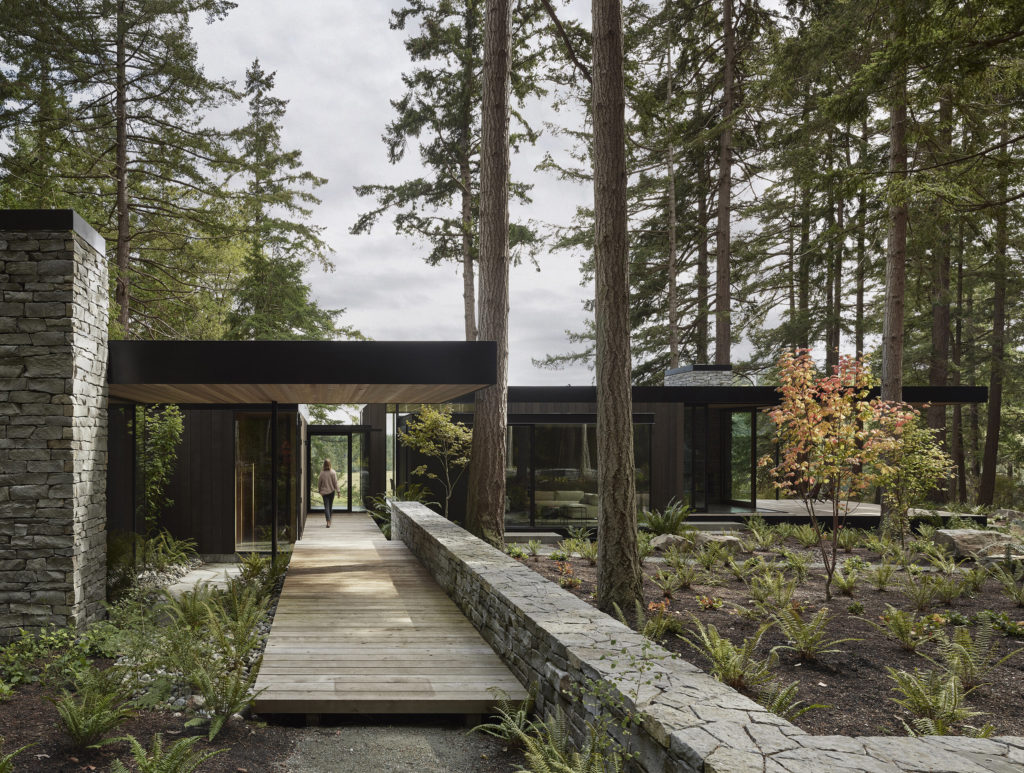
How would you define Mwworks’ design aesthetic and what are the key influences behind that aesthetic?
At the core of every project lies a love of material, craft, and the expression of how a building comes together. It’s this, along with a deep respect for the place we live and work, and our belief in the possibility for architecture to connect and amplify the landscape around us. We strive to use materials and mass in simple, legible ways that can be felt in the completed work. Simply put, the best design tends to be really tangible in the way that people use it, and can be measured in simple ways. We find that subtle surprises in how light moves, views revealing themselves, and how a material ages tend to be more rewarding than complex formal shapes.
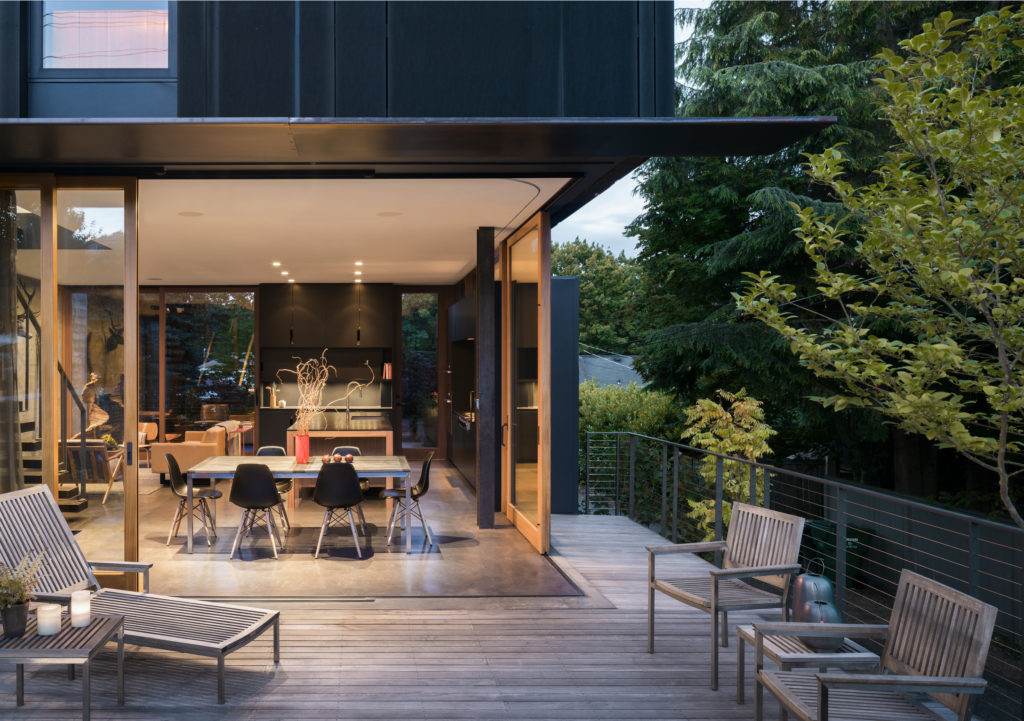
Mwworks is certainly making its mark on the landscape of Northwest Modernism. How do you see your place in the legacy of PNW Modernism?
We would certainly hope our work is relevant beyond this moment, but wouldn’t count ourselves among those trailblazers. If we are fortunate enough to continue to create work that resonates with people for a couple more decades, we can begin to think about legacy. When we started Mwworks our first concern was to do good work—now, we are committed to that as well as creating a great firm culture and maintaining things in the long run.
Obviously, there are many different ways to define Modernism with a capital “M”. To you, what makes Mwworks a Modern architecture firm?
While we do tend to think of our work as part of that tradition, language means different things to different people and the term ‘Modern’ is one we try to use sparingly. With clients, we try to speak about how the work relates to them: clean lines, natural materials, spatial clarity, and a warmth and craft. Ideally, the work has a certain kind of soul to it that can be only felt in the space. That’s our goal, at least.
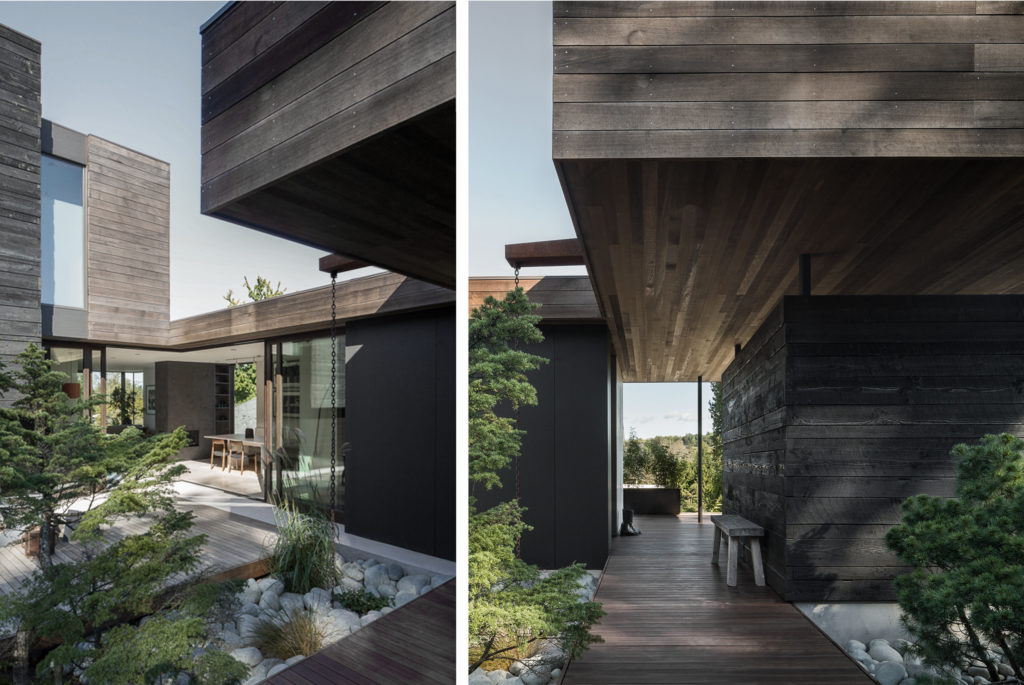
You work on projects in a range of locations, from urban settings to more remote locations. How does your approach to design differ depending on the project’s location?
We love the variation—it’s what inspires us. Every site has its own challenges and opportunities that help to guide the design and push us in new directions. Our Courtyard House is on a very urban lot in Seattle, so the core design question was about how to create privacy from many close neighbors while still connecting to the landscape. From inside the house, it’s almost like you aren’t even in the city. For more rural sites like Whidbey Farm, set in the forest, the design challenge was more about amplifying the qualities of the site without changing its character.
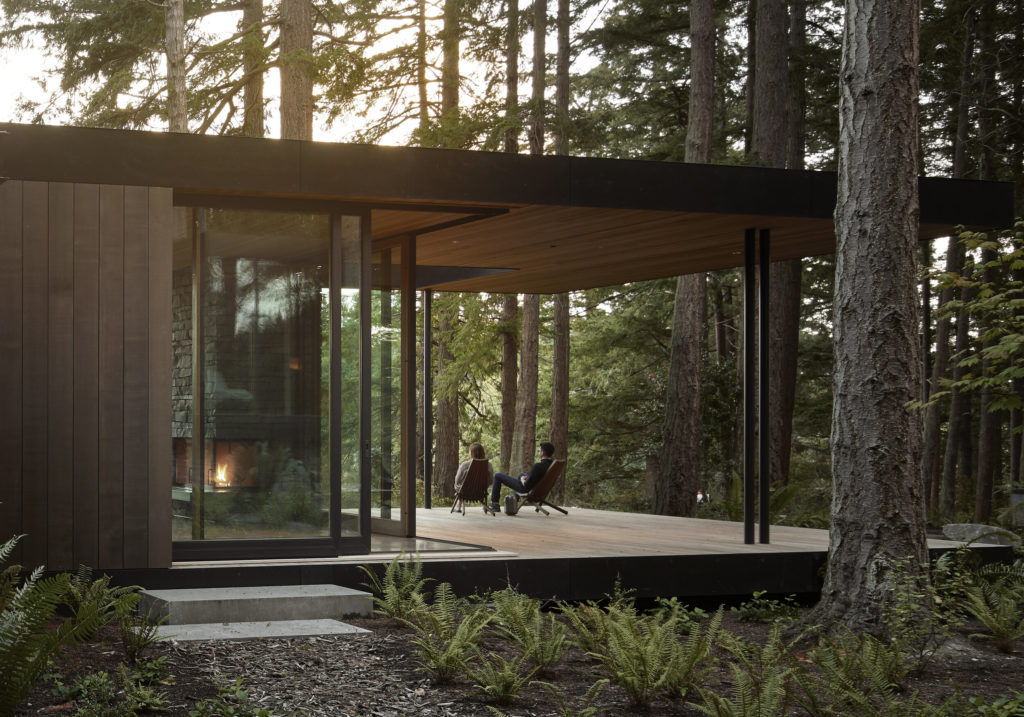
In your mission statement, you write, “We believe in comprehensive design solutions that respond to global concerns regarding our limited natural resources, environmental pollution, health, and biodiversity.” Can you give a recent example of how environmental and sustainability factors figure into your work?
It’s no secret that the construction industry has a significant impact on climate change. With elegant design, creative thinking, and careful construction, buildings can consume less and last longer. The integration of sustainable technologies like planted green roofs, solar power, super-insulated assemblies, water collection, recycled and environmentally friendly materials doesn’t need to look and feel like an experiment. Thoughtful incorporation of these principles early in the design process can produce buildings that are rich, appealing, and responsible. That said, all of us (owners, contractors, and architects) need to go even further, and we’re talking more and more in the office about how to do that.
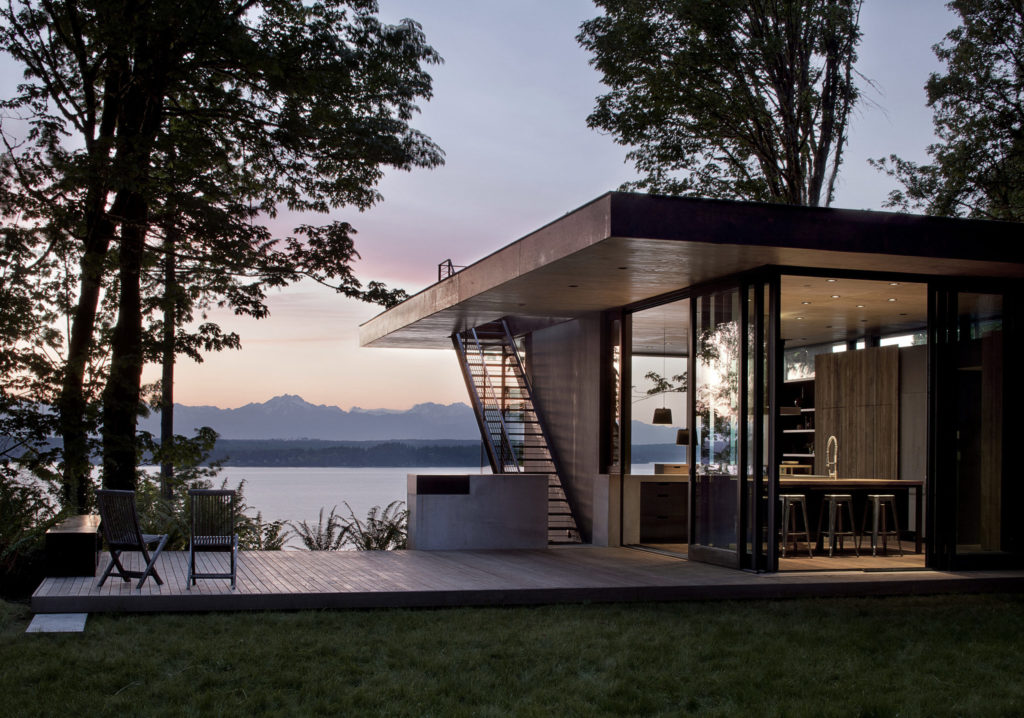
Which Mwworks projects are you most proud of?
That one is tough as each project has unique challenges and solutions and the exploration in each can be very different. Often, the satisfaction in a completed project is not necessarily tied to the physical expression of the building. An early project with a limited budget, our Case Inlet retreat from 2011 would be high on that list. It required a lot of effort to achieve the outcomes we hoped for, but ultimately that project played a big role in setting the stage for the type of work we wanted to do. The owners placed great trust in a young firm, and we were lucky for that opportunity so early in the development of our office.
How has your vision for Mwworks evolved since its founding in 2007? What has stayed the same?
We remain convinced that even modest architecture can be a powerful force in the daily lives of its users. Architecture can surprise, delight and, in its best moments, create a sense of poetic calm and a powerful relationship with the natural world. We have always strived to stay small and focus on doing our best work with good people. Our focus has been primarily on special homes, but we are seeing a lot more opportunities to expand into project types such as wineries, hospitality projects, and restaurants that value strong design and meticulous craft.
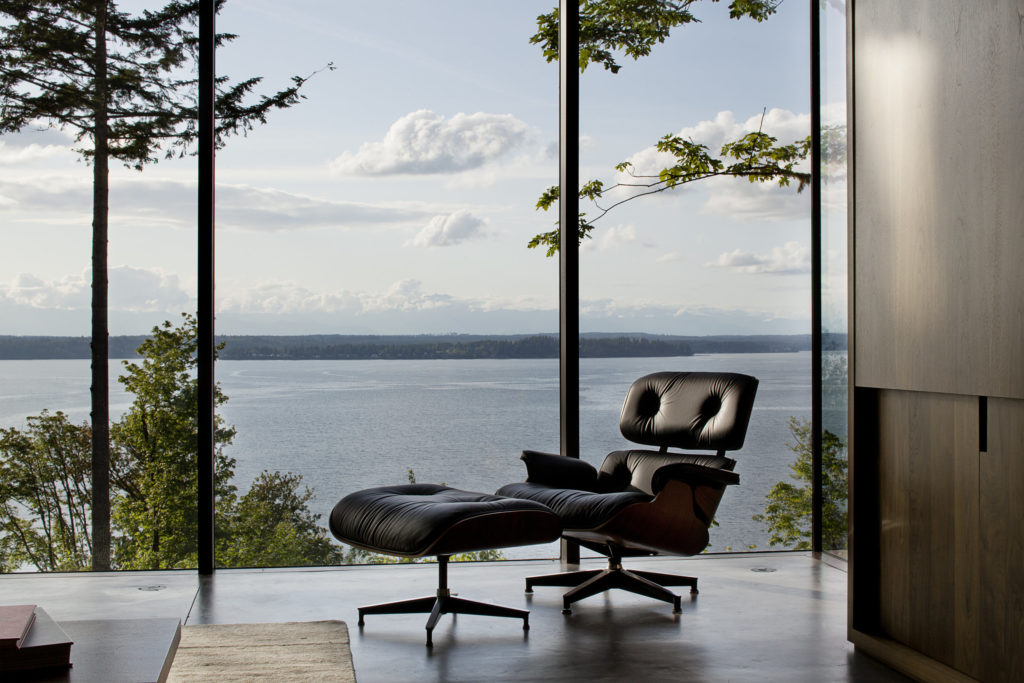
What upcoming projects are you most excited about?
As a smaller studio, we generally don’t have more than a half dozen projects at any one time, but there are several that have us pretty excited: three really beautiful spots in the San Juan Islands, a two-acre bluff site on Whidbey Island, and mid-century Eichler-inspired remodel in Oregon and a vacation home on the Key Peninsula, all of which feature wonderful landscapes and wide range of design opportunities. And we are currently fielding some interesting inquires for a project in the mountains of Mexico and a small African island. We’re really excited about the opportunity to expand the reach of the office, the different project types, and to explore how our work might incorporate materials and climate influences from regions very different from our own.
For more Northwest Modern homes, visit 360modern.com.
